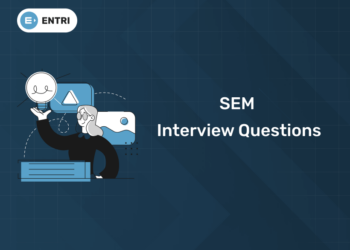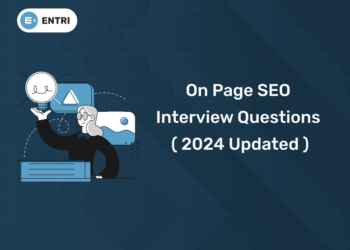Table of Contents
Speaking to machines is considered by some futurists to be the next step in human-machine interaction and collaboration. For those who want to be at the forefront of this exciting revolution, there are many hurdles to overcome, including setting up and working with python speech recognition software.
It involves the use of pattern-matching to understand human speech and convert that speech into digital language, which can then be used to control devices, do data analysis, or even be turned into the text itself. Python has become the de-facto programming language in this field, mostly because of its ease of use and flexibility.
Python Speech Recognition
In this part of the tutorial, we’ll focus on concepts every beginner needs to understand before getting started with real coding: Command Center Speech & Audio Resources Grammar Elements Usage Guidelines Part Sentence Detection: One important aspect of voice recognition python involves recognizing sentences spoken by your user. Most command centers need to be able to pick up certain keywords or phrases that activate certain tasks. For example, you might say Hey Siri followed by turning off my lights. In this example, Hey Siri would be recognized as the command center keyword, and then the detected sentence would be turn off my lights. Note that sometimes the microphone might pick up more than one sentence at once which means it’s important to include some sort of buffer like (a pause) before and after each sentence so that only one sentence will be detected. In order to detect these keywords in our code, we can use pattern matching using regular expressions (regex). Regular expressions are a type of code designed specifically for searching through text data sets looking for specific patterns.
“Ready to take your python skills to the next level? Sign up for a free demo today!”
Recoding your voice data
Now that you have your audio files ready, it’s time to start recording them into the right format. The first step is to convert them into a WAV file. You can do this using the wave module in Python. Next, you’ll need to open up a new file in binary mode and write the contents of the WAV file into it. Make sure to close the file when you’re done. Now that your audio data is in the right format, it’s time to start processing it. The first step is to split the data into frames. This can be done using the frame_rate variable from earlier. Once you have your data split into frames, you can start running it through a speech recognition algorithm. The simplest one to use is HTK-a fully unsupervised recognizer that uses hidden Markov models (HMMs) for acoustic modeling. It has the best accuracy rate for real-time systems but doesn’t work well with background noise or other speakers. Pocketsphinx uses Hidden Markov Models (HMMs) as acoustic models and performs well even in noisy environments or when there are multiple speakers on the same recording. These models take much longer to train than HTK so they are not as accurate but they don’t require an external service like Google Cloud Speech API or Azure Cognitive Services to generate phonetic labels.
Training and loading models
You have reached the final part of the Speech Recognition Bible. In this section, you will learn how to train and load models for speech recognition in Python. You will also learn about the different types of speech recognition models and how to choose the right one for your needs. Finally, you will learn about some of the challenges that you may face when working with python speech recognition models. It includes hands-on tutorials where you will discover how to set up the environment and prepare test data for training from scratch as well as example code that does it all for you automatically. By the end of this guide, you’ll know exactly how speech recognition works as well as everything there is to know about building deep learning models from scratch in Python. Keep in mind that the aim of this book is not just to teach you how to use libraries like Sphinx but also to give you insight into what they’re doing under the hood. That way, once we’re done teaching you how these techniques work – and their limitations – you’ll know what direction to take if you need something more specialized.
Are you aspiring for a booming career in IT? If YES, then dive in |
||
Full Stack Developer Course |
Python Programming Course |
Data Science and Machine Learning Course |
Using your model
You’ve now created a speech recognition model! In this final part, you’ll learn how to use your model to transcribe speech. You’ll also learn how to improve your model’s accuracy. Let’s get started! First, we need to import the pyaudio library and the core API module. Then we’ll load our audio file using pyaudio.read() and start recording using the record() method of pyaudio. We’ll play back what we recorded using play(), and then stop recording with stop(). Finally, we can compare what was said with what our model predicted using compare_predictions(). Now let’s give it a try! So far, so good! Our recognizer is predicting that I’m saying predicting for every sentence. So I’ll say I am happy and see if it does better than before.
“Experience the power of our web development course with a free demo – enroll now!”
Improving Accuracy of the Model
If you’re not happy with the accuracy of your model, there are a few things you can do to try and improve it. First, you can try different hyperparameters for your model. Second, you can try different feature extractors. And third, you can try different types of data. For example, since we’ve been using short recordings so far, maybe you want to experiment with longer recordings or find some way to increase variation in the dataset by looking at many more speakers or people from other countries. You might also decide that the quality of the audio is too low and need to re-record them or use features that work better with bad quality audio. A few points before I close out this blog post: Make sure that you have a validation set before training your model; make sure that when you’re evaluating results, you evaluate on independent test sets as well as on how well it does on your validation set; and if accuracy is really low then play around with different parameters but be careful about overfitting! As always, thank you for reading my blog posts. Stay tuned next week for another exciting new topic on machine learning! Now onto today’s important question: How do I train a model?
Sample Applications
Now that we’ve gone through the basics of setting up your environment and working with audio files, let’s move on to some fun stuff! In this section, we’ll be looking at some sample applications that use speech recognition. These should give you a good idea of what’s possible with this technology. Using what we learned in part 3 about finding the best frequency range for our voice recognition python, here are some ways you can train Amazon Alexa or Google Assistant
1) Have them tell you how many lights are on or off.
2) Ask for help to find pizza delivery nearby
3) Have them add an event to your calendar
4) Ask them if they can do math problems (answers will be yes or no). What other things would you like to ask Alexa or Google Assistant?
5) Count the number of books you have. You could also try to see if it recognizes Can I read please? as counting books and responding accordingly.
6) Teach it new words by spelling them out letter by letter (this is how I taught my assistant Io which means soul). What other words might you want your AI assistant to know?
7) Get sports scores from ESPN or CNN, etc. Just remember that not all services offer audio – it depends on their partner deals. Which are your favorite services? Do you need any more ideas for apps to create? Let me know in the comments below.
“Get hands-on with our python course – sign up for a free demo!”
Related Articles
| Our Other Courses | ||
| MEP Course | Quantity Surveying Course | Montessori Teachers Training Course |
| Performance Marketing Course | Practical Accounting Course | Yoga Teachers Training Course |












